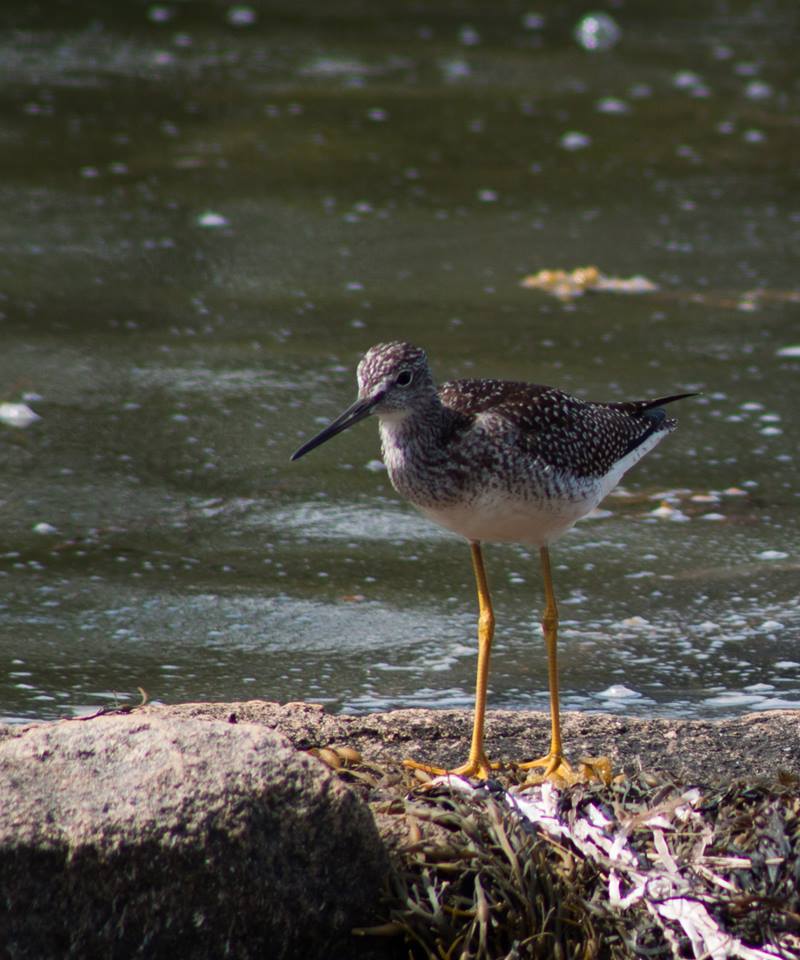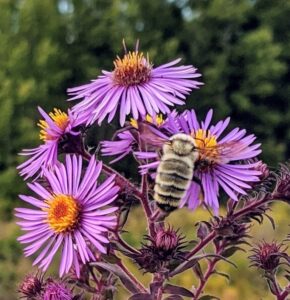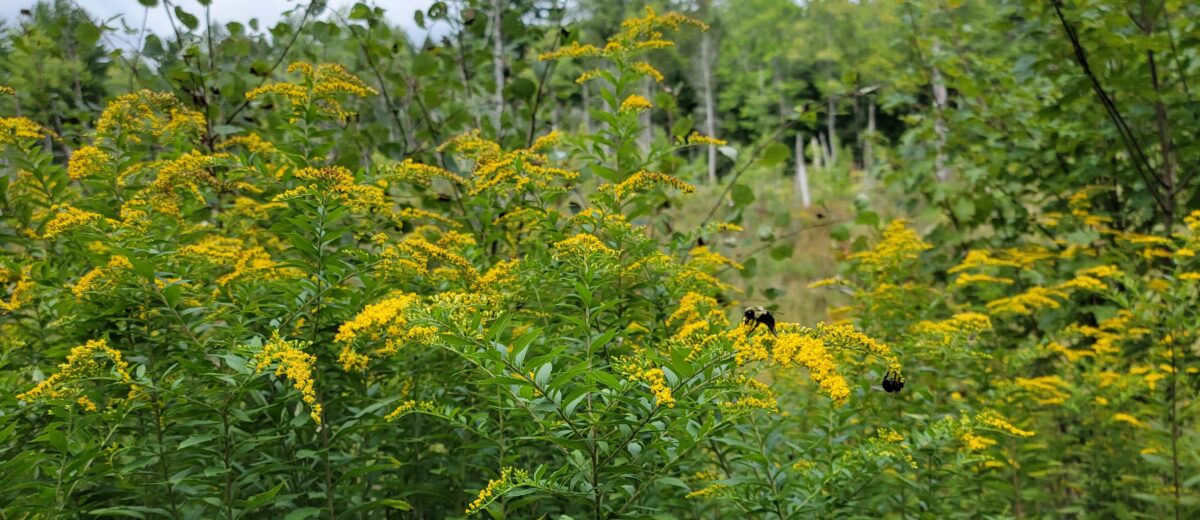by Catherine Schmitt
If months had a color, September would be yellow, thanks to the sunflowers, yarrow, and especially the goldenrods growing along roadsides, unmowed fields, meadows, marshes, and beaches. There is more yellow to be found.
Shorebirds are migrating, and yellow bills and legs are distinguishing features of many, including, of course, Greater Yellowlegs, a relatively large shorebird seen this year at Bass Harbor Marsh, Wonderland, and Seawall. However, more people have seen the similar but smaller Lesser Yellowlegs, including at Bass Harbor, where Champlain Society member Charles Townsend found them common in August 1880. Migrating now are the young birds that hatched this year in boreal wetlands to the north.

Pectoral Sandpiper also has yellow legs, but is smaller than Lesser Yellowlegs. Pectoral Sandpiper was seen at Bass Harbor by Champlain Society member Henry Spelman in early September 1882. Writing in 1941, Carroll Tyson and James Bond described the Pectoral Sandpiper as a “Common transient often seen in late summer.” Recent observations in eBird affirm this, and sightings now extend into October.
Blending in with dried stalks of reeds and browning vegetation in marshes are the pale yellow streaks on the neck and bill of the American Bittern. The American Bittern breeds in Acadia, and migrates to the southern United States, Mexico, and Central America for the winter. One was seen at Bass Harbor by Henry Spelman in early September 1882. Tyson and Bond wrote, “This is a rare and local summer resident on Mt. Desert Island, nesting occasionally in Fresh Meadow, in the marshes bordering Aunt Betty’s and Seal Cove Ponds, and probably in other swamps on the island.” Observations submitted to eBird suggest this species remains uncommon.

The latest-of-the-season historic bumble bee record is a Yellow Bumble Bee (Golden Northern Bumble Bee), Bombus fervidus, collected by William Procter at the north end of Eagle Lake on September 26, 1933. No one has recorded this species for the Acadia region this century; the closest iNaturalist observation was in Scarborough in September 2020. The species is declining across its range. But other bumble bees—Common Eastern Bumble Bee, Tricolored Bumble Bee, Two-Spotted Bumble Bee, and Yellow-Banded Bumble Bee—continue to gather pollen and feed on nectar; they’ll be around as long as the flowers last.
Yellowish September moths include the Scalloped Sallow Moth, rusty orange, emerging from beneath the fallen leaves; Yellow-Collared Scape Moth; and the Chain-Dotted Geometer Moth, with yellow on its head and “shoulders.”

Butterflies are yellow this time of year, too. The yellow-themed Sulphur family of butterflies may be the inspiration for the name “butter fly.”
Auburn Brower found a Little Yellow in Bar Harbor on September 3, 1934. This is the same species that Champlain Society member Roland Thaxter collected in Northeast Harbor on August 22, 1880, at that time the northernmost record for Little Yellow, which lives in the Southeastern U.S. and wanders north in summer. There are no iNaturalist records for Little Yellow in Maine; the closest confirmed record is from 2014 in central Massachusetts.
Easier to find might be the Clouded Sulphur, which Auburn Brower found on Mount Desert Island on September 25, 1935. Yellow with black spots, this is a common butterfly of open fields and clover lawns. There are 11 iNaturalist records for this species on Mount Desert Island, including three from the month of September.
Other historic butterfly records for September include the Common Roadside-Skipper, Compton Tortoiseshell, Gray Comma, and Leonard’s Skipper. Auburn Brower collected a Leonard’s skipper (mostly reddish-orange, trimmed in black, the underside of the hindwing has a row of spots that can be yellowish, flies in late summer) along Norway Drive on September 10, 1938. There are no iNaturalist records for this species in eastern Maine.
Orange is also a timely color, ruled by the monarchs now migrating south. William Procter recorded a monarch at Seawall on September 23, 1933. Monarchs in various life stages have been documented in Acadia in September, and adults have been seen as late as October 21—but let’s not get ahead of ourselves. The goldenrod’s in flower and abuzz with yellow-striped bees, sulphur-hued butter flies amid the clover, and great tides of yellow-legged birds are sweeping along the shore as the sun sinks lower but still golden in the turning sky.
Join the Landscape of Change project and share your September yellow via iNaturalist and eBird.
